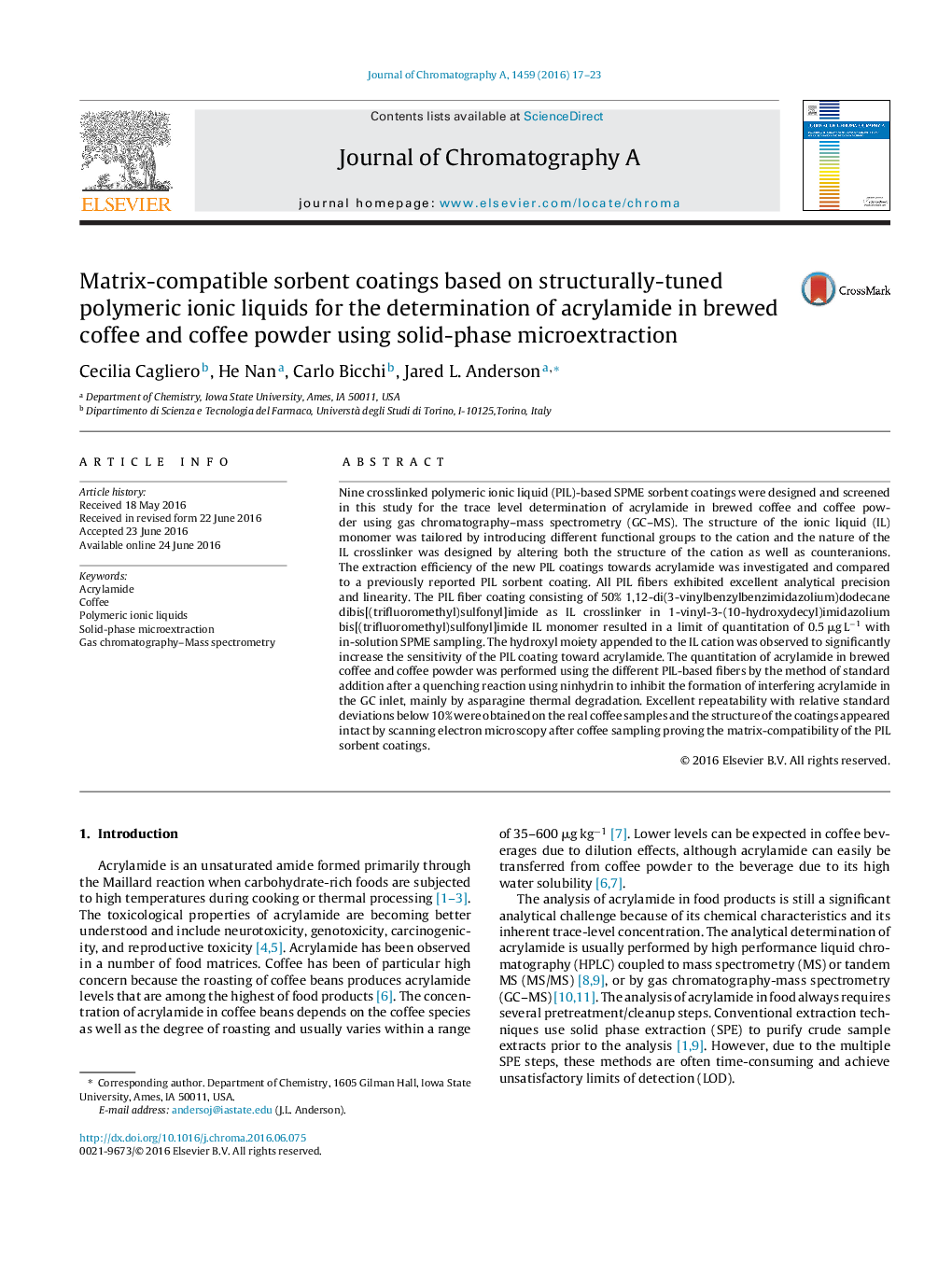| Article ID | Journal | Published Year | Pages | File Type |
|---|---|---|---|---|
| 1200095 | Journal of Chromatography A | 2016 | 7 Pages |
•Chemical structures of 9 PIL SPME coatings are examined for acrylamide selectivity.•Coatings containing hydroxyl functional groups exhibited lowest LODs for acrylamide.•In-solution SPME sampling was applied in brewed coffee and coffee powder.•The best PIL fiber produced a limit of quantitation for acrylamide of 0.5 μg L−1.•All coatings were imaged by SEM and were observed to be matrix-compatible.
Nine crosslinked polymeric ionic liquid (PIL)-based SPME sorbent coatings were designed and screened in this study for the trace level determination of acrylamide in brewed coffee and coffee powder using gas chromatography–mass spectrometry (GC–MS). The structure of the ionic liquid (IL) monomer was tailored by introducing different functional groups to the cation and the nature of the IL crosslinker was designed by altering both the structure of the cation as well as counteranions. The extraction efficiency of the new PIL coatings towards acrylamide was investigated and compared to a previously reported PIL sorbent coating. All PIL fibers exhibited excellent analytical precision and linearity. The PIL fiber coating consisting of 50% 1,12-di(3-vinylbenzylbenzimidazolium)dodecane dibis[(trifluoromethyl)sulfonyl]imide as IL crosslinker in 1-vinyl-3-(10-hydroxydecyl)imidazolium bis[(trifluoromethyl)sulfonyl]imide IL monomer resulted in a limit of quantitation of 0.5 μg L−1 with in-solution SPME sampling. The hydroxyl moiety appended to the IL cation was observed to significantly increase the sensitivity of the PIL coating toward acrylamide. The quantitation of acrylamide in brewed coffee and coffee powder was performed using the different PIL-based fibers by the method of standard addition after a quenching reaction using ninhydrin to inhibit the formation of interfering acrylamide in the GC inlet, mainly by asparagine thermal degradation. Excellent repeatability with relative standard deviations below 10% were obtained on the real coffee samples and the structure of the coatings appeared intact by scanning electron microscopy after coffee sampling proving the matrix-compatibility of the PIL sorbent coatings.
